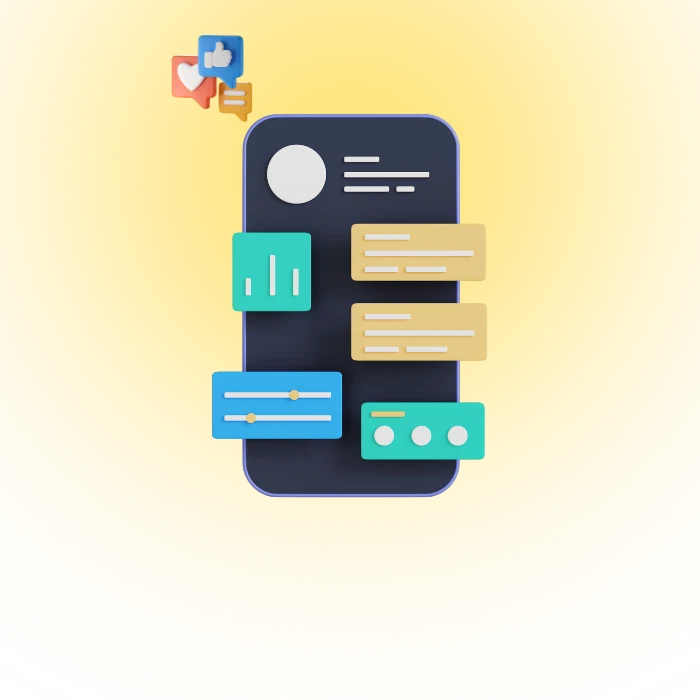Mobile app development is at the forefront of innovation in today’s fast-paced digital environment. Both companies and developers are always looking for the most effective, affordable, and user-friendly solutions to distribute their programs to a global audience. Cross-platform and native app development have become the two key strategies in this field. Each of these approaches has its own benefits and drawbacks, and the discussion surrounding them is comparable to a Wild West battle. But will native app development actually become obsolete as a result of cross-platform development? Let’s start on this fascinating trip to find the solution.
Cross-Platform App Development: A Game-Changer
Cross-platform app development has completely taken over the digital world, providing a universal method for creating applications that function flawlessly across many platforms. The days of developing distinct codebases for iOS and Android are long gone. Developers can write code once and deploy it across a number of operating systems using cross-platform tools, which saves them time and money.
This approach makes use of tools like React Native, Xamarin, and Flutter, which let programmers use a single codebase to create native-like experiences across several platforms. It’s similar to building a universal Swiss Army knife of an app. For companies and developers aiming to cut costs, development time, and effort, cross-platform development can be a game-changer.
Not all applications, it’s vital to remember, make good candidates for cross-platform development. Even though it has many benefits, highly specialized or resource-intensive applications could still prefer native development. Cross-platform development is essentially the game-changer that streamlines and expedites the process of developing apps for a variety of applications.
Native App Development: The Tried and True Approach
Creating native apps has long been the benchmark for producing excellent user experiences. These programs are specifically designed for either iOS or Android, enabling programmers to take full advantage of each platform’s capabilities.
Think of native app development as a well-fitting, exquisitely designed, and wonderful-feeling tailored suit. It can utilize all of the device’s potential because it was created specifically for one platform, resulting in maximum performance and a fluid user experience.
This strategy is the tried-and-true choice for people who demand the greatest caliber, particularly in situations where responsiveness, accuracy, and speed are vital, as in gaming or real-time data processing applications.
Cross-Platform vs. Native: The Showdown
The conflict between native and cross-platform app development resembles a traditional standoff. Native developers advocate the excellence and performance of their platform-specific inventions, while cross-platform developers defend the effectiveness of their one-size-fits-all methodology. Which route is preferable is still an open topic.
It’s crucial to realize that there isn’t a single solution that works for everyone. The particular requirements and objectives of your project should guide your decision between cross-platform and native development. Cross-platform development is a sensible option for companies looking to efficiently reach a large audience while saving time and costs. When you require an app that shines in terms of performance, user experience, and access to platform-specific features, native development is the best method.
The winning strategy in this contest will depend more on which strategy is best suited to the particular needs of your project than on whether the strategy is superior.
Pros and Cons of Cross-Platform Development
The benefits of cross-platform development are numerous and compelling. To determine its applicability for various projects, let’s examine its advantages and disadvantages:
Pros:
Cost-Effective: With a single codebase, development costs are significantly lower.
Time-Efficient: Develop once, deploy everywhere, saving time in the long run.
Easier Maintenance: Updates and bug fixes are more straightforward due to the shared codebase.
Cons:
Performance: Cross-platform apps may not match the speed and optimization of native apps.
Limited Access: Access to platform-specific features might be restricted.
In summary, the pros of cross-platform development, including cost savings and streamlined development, make it an attractive option for many projects. However, performance and access to device-specific features may be limiting factors for certain applications.
Mobile App Development: Meeting User Expectations
Due to their optimized performance and user interface, native apps frequently provide a better experience in a world where mobile consumers have high expectations. Cross-platform apps, on the other hand, are catching up and attempting to satisfy these high criteria.
Users want apps to load quickly, function flawlessly, and have an easy-to-use UI. As they are specifically designed for the platform they run on, native apps have always exhibited this characteristic. However, cross-platform apps have significantly advanced user experience, making them a viable option for a wider variety of applications.
Businesses must carefully evaluate their target demographic and app requirements in order to meet user expectations. Cross-platform apps are progressively decreasing the gap between native apps and the high bar they are known for establishing, making the choice more difficult than ever.
The Power of Cross-Platform Tools
Cross-platform tools have transformed the app development landscape by offering a unified solution for creating applications across different platforms. Here are some of the standout tools:
React Native: React Native, which was created by Facebook, is well known for its effectiveness and efficiency. It is a popular option since it enables developers to construct mobile apps for iOS and Android using a single codebase.
Flutter: Flutter, a framework created by Google, is quickly gaining popularity and excels at producing stunning natively-built applications. Both its expressive user interface and fast performance are well renowned.
Xamarin: Xamarin, a potent tool for cross-platform development, was purchased by Microsoft. It is a good option for companies who have already invested in Microsoft technologies because it enables the construction of native applications with C# and.NET.
These tools are the backbone of cross-platform development, and their growing popularity is a testament to their efficiency and the benefits they bring to developers and businesses alike.
Native App Performance: The Need for Speed
The performance of native apps is unmatched. For applications needing high-speed interactions, such as games or real-time services, these programs work well and load swiftly.
Native apps are able to utilize the hardware and software of a device to their fullest potential thanks to optimization. This produces responsive and fluid user interfaces, which are essential in cutthroat app markets where consumers won’t accept anything less.
Native programming is the obvious solution for companies whose applications must be quick and responsive. It’s the way to give performance at the highest level, especially in stressful situations where split-second responses are crucial.
Cross-Platform Frameworks: A Versatile Arsenal
Many app developers’ hidden weapons are cross-platform frameworks. They provide a broad selection of tools and libraries, which streamlines and lowers the cost of the development process.
These frameworks offer a full range of pre-built elements and features that may be applied to many platforms. They allow programmers to write a single codebase that can be modified to work on different operating systems.
Businesses are drawn to cross-platform frameworks because of their adaptability. They offer a speedier time to market and lower development expenses. Developers have a wide selection of cross-platform frameworks to pick from in order to best meet the needs of their projects.
Cross-Platform App Pros: The Silver Lining
Cross-platform development comes with several advantages that make it an appealing option for many businesses:
Wider Reach: The app’s functionality can be distributed over more platforms by using a single codebase.
Lower Costs: Since distinct codebases are not required, development costs are decreased.
Reduced Development Time: Development is sped up by simultaneously developing for numerous platforms.
The low cost and broad appeal of cross-platform development are important advantages for startups, small businesses, or anyone operating on a tight budget. For those who want to immediately enter the market and appeal to a wide audience, it’s a workable choice.
Native App Advantages: The Hidden Treasures
The benefits of native apps should not be disregarded, despite how alluring cross-platform development is. They offer a customized user experience, improved accessibility to gadget functionalities, and top performance. Native is the best option for companies that demand the highest level of quality.
Native apps offer the following hidden treasures:
Tailored Experience: Native apps are crafted for a specific platform, ensuring an optimized user experience.
Access to Device Features: Developers have full access to device features, enhancing app capabilities.
Optimal Performance: Native apps excel in terms of speed, responsiveness, and overall performance.
Native development is the preferred option for apps where the user experience, device integration, and performance are crucial. It demonstrates a dedication to giving users the best possible app.
Conclusion: Striking a Balance
There is no obvious winner in the epic struggle between cross-platform and native app development. The final decision is determined by the particular requirements and goals of the project. Cross-platform development is an appealing option for companies looking for a large audience and cost-effectiveness. However, native development is the gold standard when high levels of performance and user experience are required. The ideal course of action may be to strike a balance between the two, allowing for both efficiency and excellence.
FAQs
Is cross-platform development suitable for all types of apps?
Cross-platform development is versatile, but it may not be the ideal choice for highly complex apps requiring top-tier performance and access to platform-specific features.
Do cross-platform tools offer the same level of customization as native development?
Cross-platform tools provide a level of customization, but they may not match the depth of control and customization that native development offers.
Can a single codebase for cross-platform development truly save time and money?
Yes, a single codebase can significantly reduce development time and costs, making it an attractive choice for many businesses.
Are there successful apps that use a combination of cross-platform and native development?
Yes, some apps use a hybrid approach, combining cross-platform development for certain features and native development for others, striking a balance between efficiency and performance.
How do I decide between cross-platform and native development for my app?
The decision should be based on your project’s specific needs. If you prioritize cost-efficiency and a broad reach, cross-platform development is a good choice. If top-tier performance and customization are essential, native development is the way to go.






